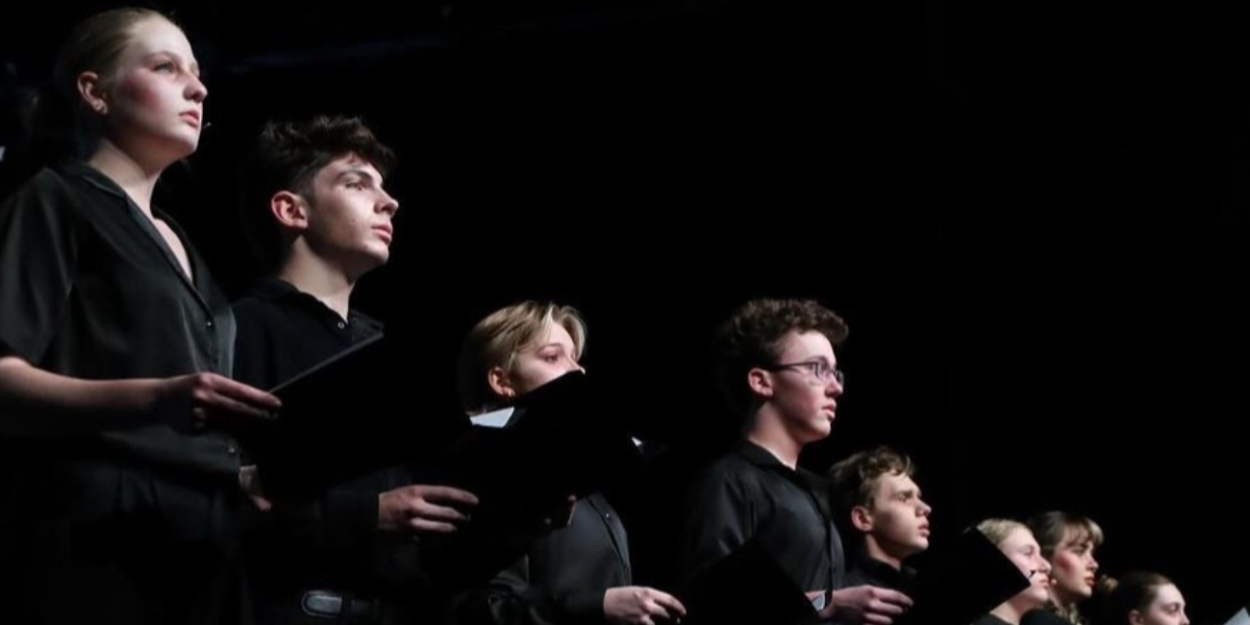Student Blog: My Experience with Devised Theatre
Most works of theatre start from a script that results in a performance. What happens when a performance results in a script?

Devised theatre is the process of creating a performance collaboratively. An ensemble comes together with a concept or a shared vocabulary and creates the work as a group. The ensemble also serves as dramaturgs, designers, and performers, rather than having more traditional set roles in a process. This is how my Company Performance Theatre class created our most recent piece, “The Eye, the Clock, and the Raven: Twisted Tales of Edgar Allan Poe.”
We started by brainstorming a list of general topics we could cover in our performance, including various concepts, questions, and public domain source material. We then narrowed them down to our top five in each category, and then our top three overall. The top three came down to “To be known is to be loved and to be loved is to be known,” “Impostor syndrome,” and the works of Edgar Allan Poe. After some discussion, we settled on focusing on the works of Edgar Allan Poe, which I had proposed initially and was thus very excited about.
We then found various niches of Poe’s life that we could focus on, including his childhood, relationships, and mental health. We also found a few of our favorite stories that we could focus on: “Metzengerstein,” “The Raven,” “The Black Cat,” “The Light-House,” “The Masque of the Red Death,” and “The Tell-Tale Heart.” Once we narrowed down to the four stories we wanted to tell, (“The Tell-Tale Heart,” “The Raven,” “The Masque of the Red Death,” and “The Light-House”), we read and annotated each story before we were given a list of methods by which to present what we had learned and observed about each of them. We gravitated toward rhetorical deconstruction, choral speaking, tableaux, dance, and mime to tell the stories.
We split our class of ten into two groups of five. My group focused on “The Tell-Tale Heart,” the other group focused on “The Raven,” and we all collaborated on “The Masque of the Red Death.” How exactly we would incorporate “The Light-House” remained up in the air at that point. Recalling the methods we had used to tell the stories when we were workshopping, we knew that we wanted to incorporate choral speaking and mime. Both groups annotated their stories heavily and then worked through which parts were necessary to the plot. Once we had blocked out a pantomime and set it to a narration, we were set on “The Tell-Tale Heart” and “The Raven.” In our pantomime, we had heavily experimented with the concept of “dancing with death” in “The Masque of the Red Death,” so we choreographed a lyrical dance to Romantic-era music to tell the story. It was suffering from lack of consistency with the previous pieces’ narrations, so we added a narration of the text over the music. In order to connect the pieces, I wrote transitional scenes in between them: narration of Poe’s fictional journal. These scenes were based off of “The Light-House,” which is stylized as a series of diary entries. We told the key points of his life, from his early days as an author, to his marriage to his wife, to his wife’s death, to his fall into insanity. We used these to blur the stories into one piece, which ended up having a really cool effect.
Our performance went very well, and we had a ton of fun putting it together. I got to play the narrator of “The Tell-Tale Heart,” identified as Murderer in our script. I have always had a soft spot for playing insane characters, since they require you to throw out everything you know about acting: their beats are sporadic, their objectives are irrational, and their characters are unpredictable. I also got to work as the hair and makeup designer for the show, which was my first time working in that specific technical aspect. I kept the hair design simple, with low buns for the feminine-presenting actors and maintaining the masculine-presenting actors’ natural hairstyles, since none were too outlandish. Where I really had fun was with the makeup design. Drawing inspiration from the recent Broadway adaptation of Sweeney Todd as well as the 2007 film, I had actors mix their foundation with white face paint to create a pale but natural look. Then, I used dark brown contour on the cheekbones, nose, and jaw to create both contrast and a general hollowed-out look. This was combined with purple-red makeup around the eyes to add to the sickly effect. The objective of my makeup design was to play off of the “uncanny valley” phenomenon by making the actors look half-dead, but still realistic enough that the audience would not totally disregard it as fantastical. Overall, playing with Poe’s works and diving into the realm of devising for the first time was a real growth experience for my peers and I. Using experimentation to create a formal script was foreign to all of us, but we ended up creating a piece we were all proud of!
Comments
Videos


